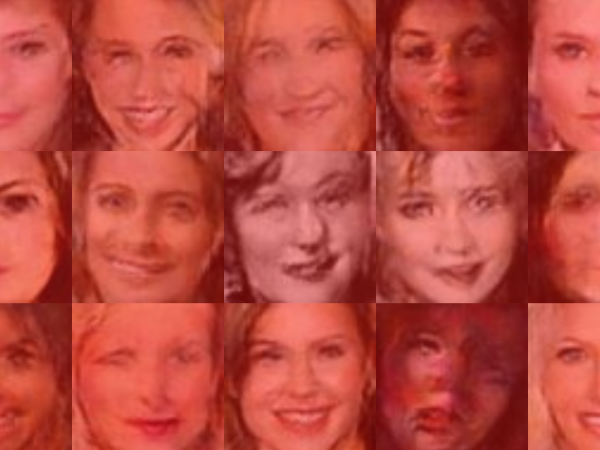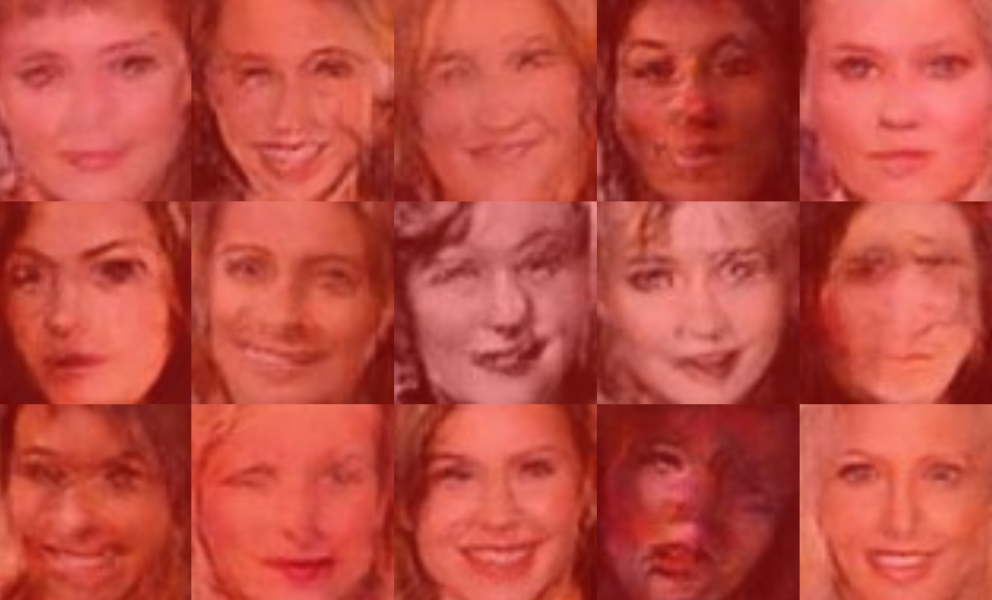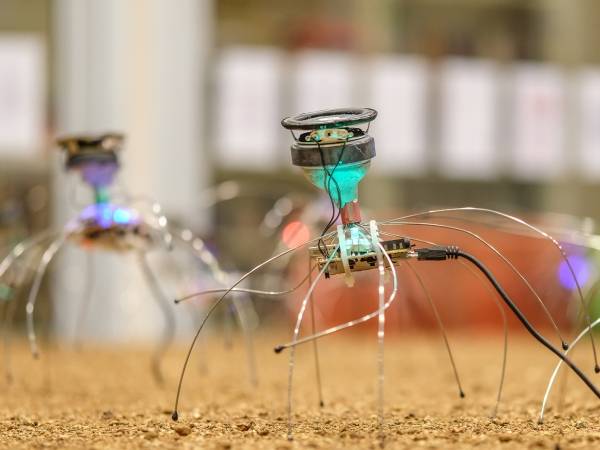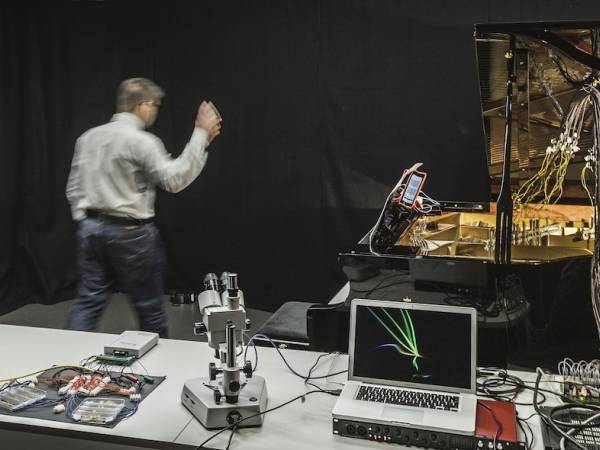15 Minuten
The second part of this short series of texts on artificial intelligence is dedicated to current transformations through artificial intelligence from a social perspective. We are currently witnessing the introduction of AI in almost all areas of society. Digital media determine the information cycles of the 21st century, digital data is the main raw material of our time. The ongoing digitalization of society is bringing about a comprehensive technological, information-theoretical, and communicative change. Even if this is still a long time coming for schools and health authorities, digitalization is transforming social behavior, organizational structures and global economies, and Covid-19 has accelerated this process worldwide. Based on the findings of quantum mechanics ,1the outlook for the foreseeable future in the direction of quantum computers 2 already suggests that not all shifts have been completed by any means; new possibilities are constantly emerging, just think of cryptocurrencies and non-fungible tokens (NFTs) in digital art.3 The introduction of quantum computers will lead to further development spurts, not least in relation to artificial intelligence, a computationally intensive process.
Tool and work
One of the most frequently quoted AI researchers in the academic world is currently the young German computer scientist Richard Socher4, in an interview lasting more than eight hours he answers the question: What do machines think? (see Socher, 2020) He demystifies artificial intelligence. He explains the exponential growth of AI applications simply by increased efficiency. AI performs actions that we as humans are not (yet) capable of. Technological developments have always caused and continue to cause a changing structural understanding, for example with regard to mobility or work. Historically, this has taken place, for example, with the transition from horses to railroads or the introduction of machines in fieldwork. Currently, it is important to recognize that repetitive tasks are performed more efficiently by AI than by humans. This shows that AI is on its way to becoming a general tool. Socher sees the actual dystopian potential of AI in the foreseeable loss of a large number of jobs, an aspect on which Bill Gates, interestingly enough, also expresses criticism. The dwindling demand for repetitive work carried out by humans is attacking the fundamental concerns of the social market economy: how can social equilibrium be maintained in the face of these shifts? Richard Socher argues that new, more interesting job profiles can be created, such as ethical architects. AI seems to have a positive effect on the distribution of work in other ways; so-called smart job matching in the area of recruiting is currently being tested using data analysis and artificial intelligence. Can the use of AI lead to greater fairness in the distribution of work? The starting point for these considerations is the systemic discrimination of entire population groups in the allocation of jobs in many sectors, which anonymization is known to be able to counteract. For example, a Harvard study shows that the transition from regular orchestra auditions in the 1970s to blind orchestra auditions in the 1990s, in which candidates played behind a curtain, reduced the principle of gender-specific recruitment in symphony orchestras in the USA. The number of female musicians increased by an astonishing 30%. IBM and start-ups such as Truffls in Berlin and 8vance in the Netherlands are now integrating AI into applicant management systems. On their Jobliebe platform, the latter use algorithms that categorize candidates based on their skills rather than their origin and gender (cf. Miethge, 2021). Discrimination against the previously disadvantaged can be circumvented, as can the emergence of new types of discrimination against previously dominant groups.
There is a desirable digitalization, according to philosopher Markus Gabriel (Gabriel, 2021). As a result of the mutual conditionality of digitality and materiality, artificial intelligence enables desirable developments in several areas beyond the digital world. Although the greatest public interest in trees is in forests and trees outside forests are not well documented (Schnell et al., 2015), an international research team led by the University of Copenhagen in collaboration with NASA has investigated the western part of the Sahara, the Sahel and the sub-humid zone of West Africa for possible vegetation and they have found what they were looking for (Spreer, 2021):
A large proportion of trees and shrubs in dry areas grow in isolation, without canopy closure. [The canopy size of every tree larger than 3 m2 was mapped over a land area spanning 1.3 million km2 [...] using sub-metric resolution satellite imagery and deep learning (LeCun, others). We detected over 1.8 billion individual trees (13.4 trees per hectare) with a mean canopy size of 12 m2 along a precipitation gradient of 0 to 1,000 mm per year. [...] Although the overall canopy cover is low, the relatively high density of isolated trees challenges prevailing narratives of desertification in drylands. [...] These non-forest trees play a critical role in biodiversity, providing ecosystem services such as carbon storage, food resources and shelter for humans and animals [ see Bayala et. al., 2014 & Stringer, 2012]. (Brandt et al., 2020)
The research team is now initiating an investigation into the role of all isolated trees in mitigating degradation, climate change, and poverty. After all, what can we learn from this change in perspective with regard to drylands? The project is proving to be forward-looking, not least against the backdrop of global warming and the associated desertification of entire regions.
A research project on the prediction of protein structures in the field of bioinformatics can also be cited as an example of positive AI applications:
Computational prediction of protein structure from sequence is broadly viewed as a foundational problem of biochemistry and one of the most difficult challenges in bioinformatics. Once every two years the Critical Assessment of protein Structure Prediction (CASP) experiments are held to assess the state of the art in the field in a blind fashion, by presenting predictor groups with protein sequences whose structures have been solved but have not yet been made publicly available. […] DeepMind's entry, AlphaFold, placed first in the Free Modeling (FM) category, which assesses methods on their ability to predict novel protein folds. (AlQuraishi, 2019)
The DeepMind industrial laboratory took part in the CASP13 competition for the first time in 2018 and came out on top. Unlike the competing research teams, it used AI for the free modeling of proteins based on data from 170,000 publicly available protein structures. In 2020, DeepMind's AlphaFold 2 upgrade won the competition again (CASP14). (see Outeiral Rubiera, 2020) What implications does this example reveal?
We’ve also seen signs that protein structure prediction could be useful in future pandemic response efforts, as one of many tools developed by the scientific community. Earlier this year, we predicted several protein structures of the SARS-CoV-2 virus, including ORF3a, whose structures were previously unknown. At CASP14, we predicted the structure of another coronavirus protein, ORF8. Impressively quick work by experimentalists has now confirmed the structures of both ORF3a and ORF8. (DeepMind, 2020)
Accurate predictions of protein structures can accelerate the development of future pandemic vaccines. However, it should not go unmentioned that DeepMind Technologies is a British subsidiary of Alphabet Inc., the holding company of Google LLC, which was created in 2015 through a restructuring of Google. Is it common knowledge that the multinational company Google not only operates the most frequently visited website in the world with its search engine, but is also successful in bioinformatics via its holding company, or to put it bluntly: that Google is now building up influence in the economic cycles surrounding the topic of health via Alphabet Inc.
Agency
Questions about agency address complex relationships that cannot usually be captured in simple answers. Admittedly, according to Richard Socher, new tools have always been developed by those who already had more resources at their disposal. It is conclusive that high-profit margins from new tools further privilege the already privileged (Socher 2020), remarkable statements from a specialist who himself generated capital through the sale of his AI-based company MetaMind in Silicon Valley. Instead of addressing the global economic imbalance, Socher focuses on ethical questions about AI. In what ways is AI being used globally as a new general tool? A comparison: a hammer can be used to smash something or build something. AI can be used for the automated killing of living beings as well as for breast cancer or protein research.
Markus Gabriel is calling for normative foundations for desirable digitalization. He is currently involved in a project for AI certification in collaboration with stakeholders from the industry in NRW; they are working on recommendations for medicine and legal tech, among others. According to Gabriel, without a normative basis, the effects of negative digitalization can prevail, e.g. through search engines with vested interests and social media, which, as they are currently set up, reinforce the polarization of society. In the interview, he says: -They are playing social chess against such a system these days as Google users. They are victims of a behavioral control below their attention threshold that is no longer recognizable to them. (Gabriel, 2021).5
In 2020, the AI start-up SuSea, founded by Richard Socher together with Bryan McCann, represents a concrete alternative to search engines with interests. It is a search engine in beta stage -A trusted search engine that summarizes the web for you.6, a potential competitor to Google. How are search engines different?
Training data
Apart from data protection and decisions regarding commercial interests, the possibilities and limitations of AI applications mainly result from the selection, i.e. the quality of the training data. A neural network can only generate so-called output based on the data with which it has been trained; Turing aptly named his test the imitation game. Jules LaPlace, an artist and programmer who also works with Hito Steyerl, among others, describes the processes using AI as follows:
When processing text for example, you could feed it [the neural network] the works of Shakespeare and then over time you would get a network, which could generate something which resembled Shakespeare, but didn’t make any sense. This is what makes these networks so strange, [… they can] only create a fuzzy representation of the same thing. The networks make a quasi realistic model of reality. So by experimenting with neural networks essentially we see, how they are limited by their training data. The network, that outputs Shakespeare, isn’t going to start outputting text that looks like Marcel Proust. It’s only going to output text like Shakespeare, because that is all it has seen. (LaPlace, 2018)
The unreflected adoption of training data for AI applications is a common problem. This can be seen, for example, in the automated denial of credit for people in the USA whose zip code refers to a place of residence where mainly African Americans live. In Denkt KI wie ein (weißer) Mann?, Anna Grubauer presents counter-designs by female researchers and artists on the Ars Electronica website. (Grubauer, 2020) For example, a growing community of self-identifying women led by Birgitte Aga and Coral Manton are questioning the representation of women by AI voice assistants such as Siri and Alexa in their ongoing project Women Reclaiming AI.
They criticize their concrete implementation as gender-specific, subordinate, and subservient:
These systems are usually developed by teams that lack diversity; they are thus embedded in distorted worldviews and stereotypes that reinforce traditional gender roles. (Aga, Manton, 2020)
In another project titled Gender Shades (2018), Joy Buolamwini and Timnit Gebru examine the biases of AI facial recognition programs:
The error rate is significantly higher for women, especially women with darker skin color. [...] This can be a problem in medical applications, for example: Even simple convolutional neural networks are capable of recognizing melanomas (malignant skin changes) in images just as well as experts. Information about skin color is extremely important here. (Buolamwini, Gebru, 2020)
Based on data from 1,270 parliamentarians from three African and three European countries, Buolamwini and Gebru have now created a new training dataset that contains all skin color types. This can also be used as a test for face-based gender recognition.
Decolonial AI
The inclusion of the indigenous community with regard to diversity against Western white supremacy also shows subversive potential in connection with AI. Instead of a technologically reproduced colonialism and monotheism, a story of connection and abundance through AI can be imagined, according to Jason Edgar Lewis in a panel on Mutating Hazards: New Threats and Injustices in AI at this year's CTM Festival (cf. Lewis, 2021) What Lewis, Buolamwini, Gebru, Aga, Manton and many more reinforce in different ways is part of the currently much-discussed approach of a Decolonial AI. (cf. e.g. Mohamed et al., 2020) However, if one assumes that colonial today no longer means the Western European countries, but strictly speaking the capitalist global market, a decolonized AI would consequently have to be located outside the capitalist market. Most of the examples cited in this text are far removed from this understanding of decolonial AI. As an American start-up, Richard Socher's alternative search engine SueSea is also undoubtedly located within the capitalist system.
My experience during my research is that a closer look reveals increasing contradictions and areas of friction in connection with current developments in artificial intelligence. The need for a fundamental reflection on AI as a general tool as well as a reflection on the agency of those who offer the tool remains of great importance.
Finally, a few questions for discussion:
What are the essential debates on the conditions, effects, and transformations brought about by AI and how can these be differentiated from potentially distracting parallel discussions? It is undoubtedly possible to generate false information through AI language and image generation, for example. But haven't we been distrusting photos since Photoshop, or are we really sure that Shakespeare wrote his works himself? Hasn't questioning information long since become a matter of course in the digital age?
How can we have a positive influence on the agency of future AI applications? If artificial intelligence is not to merely reproduce existing power structures, including those of monopolistic tech companies, heterogeneous voices in terms of origin, gender, etc. will be needed in the development of future AI systems. How can a balance be promoted in this respect?
How do individuals come to realize their own biases? With regard to the analysis of discriminatory elements of existing AI applications, the question arises as to what extent we are even able to recognize our own conditioned prejudices. Currently, for example, the massive cuts caused by COVID-19 are accompanied by increasing discrimination against Asians.
Finally, sociologist Armin Nassehi provides an unusual approach in his theory of a digital society by claiming that modern society has always been digital, meaning that digital technology is ultimately just the logical consequence of a society that is digital in its basic structure. Instead of getting lost in debates about the consequences of digitalization, he therefore recommends asking: For which problem is digitalization a solution? (Nassehi, 2019)
- 1
Interesting to know: Carroll, Sean. (2019). Something Deeply Hidden. Quantum Worlds and the
Emergence of Spacetime. Oneworld Publications - 2
Quantum computers promise to push the boundaries of computational efficiency, solving problems that overwhelm today's systems. [...] In a quantum computer, information is treated quantum mechanically; registers and memory contents can contain several values simultaneously in superposition and instructions affect all these values simultaneously. This means that even a single quantum processor is intrinsically highly parallel. The technology on which a universal quantum computer is based is still open - five technological approaches are currently being researched. The problem with the development of quantum computers is the great susceptibility of quantum states to interference. This requires extensive error corrections, which are not yet possible. In: Federal Ministry of Education and Research. https://www.bmbf.de/de/was-genau-ist-eigentlich-quantencomputing-10786.html. Status: 19.03.2021
- 3
A prominent example is Everydays: The First 5000 Days, an all-digital, NFT-enabled artwork by digital artist Beeple, minted on February 16, 2021, sold for $69,346,250 by Christie's auction house.
- 4
Richard Socher turned down an assistant professorship at Princeton and instead founded the startup MetaMind for automatic image recognition using artificial intelligence, which has since been acquired by Salesforce, based in Palo Alto. See: MetaMind. https://einstein.ai/. Status: 19.03.2021
- 5
In this context, Markus Gabriel also recommends the much-discussed book by Shoshana Zuboff on the business models of surveillance capitalism. See: Zubof, Shoshana. (2018). The age of surveillance capitalism. Campus Verlag
- 6
SuSea, siehe: https://you.com/. Stand: 19.03.2021
Anke Eckardt
Anke Eckardt is an artist and professor of fine arts at the University of Art and Design Graz. She was born in Dresden in 1976 and has lived in Graz and Vienna since 2023, having worked in Berlin, Los Angeles, Cologne, Kassel and Rome. In her expansive work, she works with sound in intermedia connections, creating audiovisual installations and sculptures that she exhibits internationally. Anke Eckardt also contributes to the further development of discourses through an artistically explorative perspective.
Article topics
Article translations are machine translated and proofread.
Artikel von Anke Eckardt
 Anke Eckardt
Anke Eckardt 




